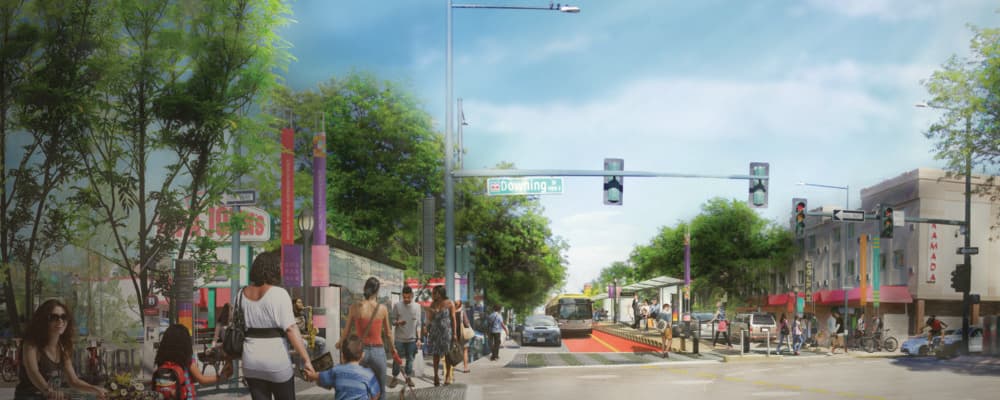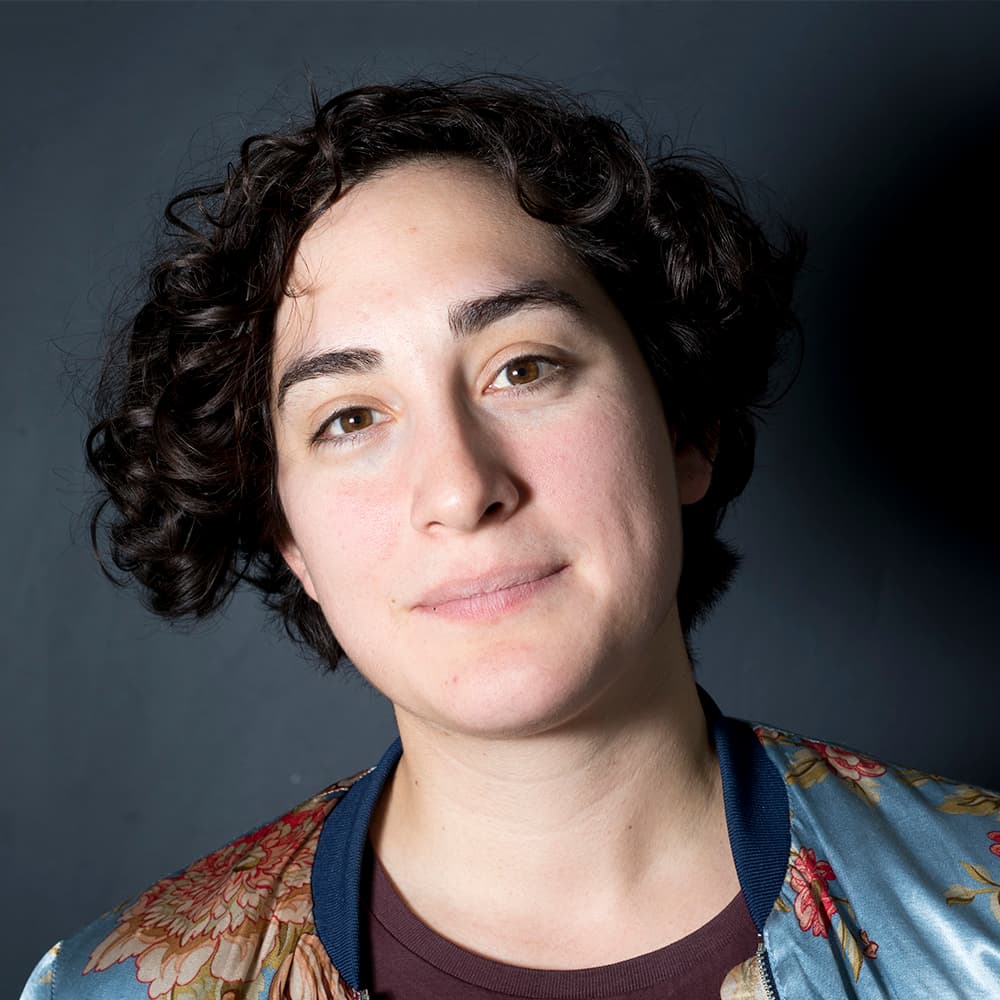
In 2035, Denver hopes that riding the bus down Colfax Avenue from I-25 to Anschutz Medical Center will be as quick as taking your car. You'd have a permanent center bus lane along Colfax from Broadway to Yosemite to thank for that, per the latest design.
Both the project's manager and Streetsblog Denver agree: This could make the Colfax Bus Rapid Transit into true bus rapid transit. It turns out all the people who showed up for public comment helped change the city's mind from an earlier side-street design.
"What we heard was from the public was, 'Well if you're going to do peak period exclusive lanes, why can't you do 24-hour lanes?" said project manager Ryan Billings. "So we took that information from the public and partner agencies and had a conversation about whether or not we could look at a 24 hour facility, we determined yes, that was feasible and palatable."
With a center dedicated lane, the eventual Colfax bus could move more quickly because it wouldn't have to deal with other traffic. That dedicated right of way means the project also gets a better score on the Institute for Transportation and Development Policy BRT standard, hence that "true" BRT designation.
Under this plan, buses on Colfax would get roughly 15 minutes faster through design alone. The buses would also move 28,000 more people, more than twice the current volume, by 2035. Elsewhere, BRT lowered travel times by 40 percent in Mexico City and spurred $6.3 billion of investment in Cleveland.
It's not final yet, though -- the city is starting public outreach on this new configuration before deciding on a preferred option this fall. There are probably people left to convince. Some wish we could just have a streetcar again. But that's more expensive.
"A January 2016 study found that upgrading service along the South Dade Busway (a 20-mile stretch of highway for buses running to Florida City) would cost about $115 million, compared to $2.5 billion on the same route for light rail. And BRT would cost roughly $21 million per year to run, compared to $46 million for rail."
It's also true in Minneapolis-St. Paul, Next City again:
"The [BRT] line has an estimated price tag of $27 million, or $2.8 million per mile. Using existing streets helped keep costs down; by comparison, the 11-mile-long Green Line LRT connecting downtown Minneapolis and downtown St. Paul cost $957 million to build."
Most importantly, it's true in Denver. Streetsblog Denver:
The agencies estimate it would cost $115 million to build BRT, plus $13 million annually to operate. A streetcar system on Colfax would cost $450 million to build, and $24 million a year to operate.
The other consistent concern is traffic. Take two lanes from Colfax, and you'll just make 13th, 14th, 17th and 18th Streets worse to drive on.
Traffic modeling for this project suggests that vehicle times would only be impacted by a few minutes. As for traffic on other streets, Billings says that's offset by people who decide to take the bus and people who change routes for other reasons -- "They may take I-70 or go out of the network completely because things change."
Plus, traffic modeling in peer cities have also proven to be conservative:
"What they're expecting and what they actually see in reality, are two different things. We actually see a lot less of that diversion in reality," he said.
If Denver does nothing on Colfax, though, traffic gets worse, Billings said.
Just because BRT is cheaper than a streetcar or light rail doesn't mean the funding is all settled. The old Colfax BRT design was expected to cost up to $135 million. The new center lane design costs roughly 25 percent more than the old design, says Billings.If the city GO Bond is approved, this project gets $55 million in funding.
The plan is to fill the rest of that gap with federal funding.
"We've done some analysis and we've worked with our partners at the Federal Transit Agency and Colfax BRT, whether it was side or center, was a very competitive project nationally and if funding were made available would likely get that funding," he said.
But if federal funding can't be secured, Billings says the city will focus on building as much of the project as it can, as fast as it can.
"That's what's great about BRT, it's very phasable. If we're only able to build a small section with our money, we can continue to look for money in the future for the next phase," he said.
Editor's note: An earlier version of this story said that the project would be finished in 2035. Current timelines estimate a finished product in 2021 or 2022.












